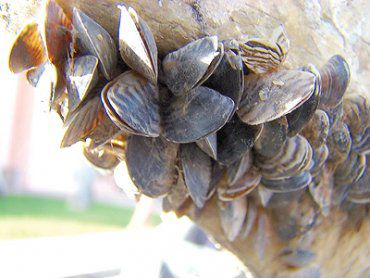Emery Water Conservancy District held a special meeting in Castle Dale.
Jay Mark Humphrey led this meeting by asking the question of those present, how shall we control and prevent an invasive species called quagga mussels and zebra mussels from damaging our dams and irrigation systems?
Humphrey emphasized the difficulty the Emery Water Conservancy District would be encountering if these invasive species started colonizing in Joe’s Valley Dam. He said the intake pipe at the bottom of the dam is 100 feet down when the dam is full, making for a difficult depth for a diver to work while cleaning the pipe of mussels. In addition after spending millions of dollars building a pressurized irrigation system he would not like to see it plugged up with these invasive species.
Several groups were represented in this special meeting: The Utah Division of Wildlife Resources, The US Forest Service, The Bureau of Land Management, Rocky Mountain Power, Members of the Public Lands Council, Cottonwood Creek Irrigation Company along with a few farmers and ranchers.
Quagga mussels and zebra mussels are small fresh water crustaceans that start out as microscopic larvae produced by adult quagga mussels or zebra mussels. These larvae float through the water for four or five days until the larvae attaches itself to a hard surface. Then the larvae grow by filtering water through its body for food and over time will grow to about the size of a thumbnail or larger with a hard shell. It is possible for a quagga mussel and a zebra mussel to produce 1,000 eggs in each reproductive cycle, about 1 million in one year.
If you would like more information go to invasive mussels on the Utah Division of Wildlife Resources website.
Quagga and zebra mussels came from Asia to this country by boats from around the world traveling in the St. Lawrence Seaway and have since infected waters in much of the United States causing a great deal of harm.
Because these mussels rapidly colonize on hard surfaces they can clog up water intake pipes and screens. These invasive species are costing communities, power plants, irrigation systems and water treatment plants millions of dollars each year. At infested areas the public can see zebra or quagga mussels on docks, break walls, buoys and boats.
At this time Utah has at least one known infestation of quagga mussels in Lake Powell. Other lakes near to Utah that are known to be infected by these clam like creatures are Lake Mead and Lake Havasu. In addition to these lakes Colorado lakes also may have an infestation of mussels.
Because it is impractical to chemically kill these mussels and other aquatic life in a large lake. The best that can be done is to prevent mussels from moving from water body to water body by decontaminating equipment and boats that have been in water that is infected such as Lake Powell.
The Department of Wildlife Resources has a permanent decontamination or cleaning station at Lake Powell and three portable boat-cleaning stations, located around the state, that remove quagga and zebra mussels for use by boaters.
The DWR recommends the following decontamination action for boaters. Clean the mud, plants, animals or other debris from your boat and equipment.
Drain the ballast tanks, bilge, live wells and motor.
Dry the boat for (seven days summer, 18 days spring/fall and 30 days in the winter) or freeze (three days).
Most boaters that use Lake Powell are aware of the problems caused by quagga and zebra mussels.
Decontamination has been the best way to prevent the spread of mussels. Mussels if left in or on the boat can clog boat pumps and hoses. Boat owners going from lake to lake have to be careful not to take hitch hiking mussels along. In some states if mussels are found on a boat there is a hefty fine given.
It has been said that chlorine or 140 degrees Fahrenheit temperature can kill quagga and zebra mussels.
At this special meeting by Emery Water Conservancy District there was no consensus of how to solve this invasive species problem.
The DWR and other agencies pleaded that they did not have enough money or manpower to oversee all of the lakes in Utah. The DWR has one man at Joe’s Valley during the boating season.
A few in the meeting suggested that since boaters were the ones bringing mussels to Utah lakes that boaters should pay a fee to go towards the maintenance of the lakes and dams. A suggestion was made that a barcode be installed on each boat and a database started to record where boats are and where they have been.
It was suggested that roadblocks be set up on selected highways to inspect all boats for invasive species. At the end of the meeting Jay Humphrey asked the Division of Wildlife Resources to work with him to come up with a suitable solution to the problem by next month.
Special meeting on quagga mussels in Castle Country

"Quagga and zebra mussels can present real problems if they get into the lakes or reservoirs."
